Marta Minujín, the goddess of Latin American pop art who paid Argentina’s foreign debt to a Margaret Thatcher double with corn on the cob and Greece’s foreign debt to an Angela Merkel double with olives, is a vanguard artist with a bohemian youth in Paris who triumphed in New York.
She initially survived thanks to scholarships, selling her first work of art at the age of 41. This year she celebrated her 80th birthday but, as is clear to see, she shows no sign of slowing down.
Marta, you tell us that you had a vocation to become an artist from the age of 10. How did you realise that?
When I was in fifth grade and 10 years old, I think, a light flashed telling me that the only thing I could do with my life was to be an artist. That is why there is now a gigantic exhibition, A Survey in NY, with my first works. In London they are exhibiting 60 informalist women and I did my [first] informalist drawings when I was 14. That is to say I was born an artist and the only thing I can do with my life is that. I cannot do anything else, not even boil an egg!
The word vocation comes from voice, it is said that having a vocation is having a voice calling you, supposedly like God for believers, and it does not call everybody, only a privileged. What is your interpretation of that call?
It was like a streak of lightning.
And where do you think it came from?
From the cosmos.
Are you a believer?
No, just in art. I believe that art cures, protects and looks after me, it protects everybody. I believe that everybody is an artist. I have some very special concepts, thinking of others and not of myself. I do not want to make a painting to hang in a museum, I want people to live inside works of art as they are now living with immersive art.
Is believing in art at the same time faith? Is there something of religion in believing in art?
No, but I believe that faith moves mountains. I make absolutely impossible works of art worldwide. The last work I did was Big Ben reclining on political books in England, via Zoom because there was pandemic. I did all the work in those dimensions, 20 metres long with Big Ben filmed horizontally, via Zoom with engineers, architects and book-packers. And you and I are now talking with the new technology there now is.
As you say, you go from strength to strength, you’ve become international but continue living in your childhood home on Humberto Primo street [San Telmo], where you have your workshop. What does that place mean to you?
Nothing, I’m totally detached. You might think I’m entering into my own planet because I was born in that house but in reality I never lived there because I lived in other countries, returning home afterwards. I inherited it from my grandfather, who was a military tailor and made overalls, which is why I always wear them. And I inherited four houses, which are 900 square metres with a gigantic open-air patio full of sculptures. So I have the biggest workshop in the world and it’s much better than having it in New York because I can work with my Argentine compatriots.
You recently explained why you wear overalls and the relationship with your grandfather. [Jacques] Lacan said the reverse, that uniform maketh the man. When you put on your overalls, do you feel something, a different energy?
I’m much stronger and express my art better. When I’m travelling around Latin America, for example, I dress up in Guatemalan or Mexican textiles. I am now designing my own clothes which will be manufactured in New York with the colours of my works. In reality I work like the Guatemalans, expressing their ideas via their clothing and everything else. Since I’m a self-contained package, I’m also the work of art – that is the theme. Not like [Pablo] Picasso, who was Picasso and a painter. [Salvador] Dalí was more similar to what he painted because he was a surrealist but I am also art.
That is an idea of the classic Greeks that the true work of art is the construction of oneself. Is there art in constructing oneself?
Maybe because every move I make and everything I do is half art. I don’t move like other people, always with a brutal velocity. I was friends with Dalí when I was young. He went party-hopping in New York in a limousine everywhere. He was a work of art, moving around with such energy. He only froze when [his wife] Gala, of whom he was dead scared, entered. We people were all “under.” I had nothing to wear, I always wore – spring, summer, winter and fall – a fake fur coat and hood, moving around on roller skates. That might all seem crazy but not really – it’s like also taking part, an animated cartoon. All artistic personalities who have been personalities, apart from artists, are like animated cartoons.
And what is being an artist in the mind of Marta Minujín?
Living, I can live via what I do. If I couldn’t create, I would have been dead years ago, along with all the different lives I’ve had.
Are the glasses you use, which are also symbols of identity like the overalls, factors in which you deposit something as if they were a fetish or a lucky charm, something which makes you feel accompanied?
Firstly, they are currently my make-up. Instead of wasting time with eyeshadow, I put on these glasses. Secondly, under the [1966-1970 Juan Carlos] Onganía military government, the Di Tella Institute was shut down and I received telephone threats from the [far right] Grupo Tacuara saying horrible things, that they were going to kill my son and cut his body up with razor blades, all that. So I went south where I wore a man’s suit, which I had made for me at my grandfather’s tailory, and I began to use glasses and a hat so that I would not be recognised in those years between 1970 and 1972. That period was very ugly, full of threats every time I came to Argentina. Luckily I wasn’t living here but in New York.
While so many people were being kidnapped here, I did something called Fit la Happening, where I did the kidnapping, authorised by the prior signature of those involved. I kidnapped 60 persons in different places and then dropped them off, removing the blindfold from their eyes. Since I am now disturbed by the war in Ukraine, I’ve been working on something for the past year since the war started which I’ve named Endemia since I had done Pandemia beforehand. With all such works I take a year so that Endemia comes at the end of the pandemic but at the start of the war and the deaths so that the colours go changing. That’s how I feel about the whole world, not isolating myself from China and everything happening politically in this country. The work called Endemia is about the war and 1,000 other things. Thinking about Argentina and all the things happening to me daily like today, when I got up there was a power cut and my fridge was completely defrosted. Since I live alone, I could not take out the car – that’s what living in Argentina today is like. So it has to do with your surroundings. If I’m in New York and there’s a brutal blizzard and I cannot leave my hotel, I’m also trapped and have to change what I do. I’m very sensitive to circumstances.
Marta, what is the relationship between the superficial and the deep? This idea of the glasses, the make-up, the Guatemalan clothes if in Guatemala, or your grandfather’s overalls – how much of that superficial detail runs deep and finally adheres to your true personality, who you are?
Do you know Marshall McLuhan’s catchphrase about the medium being the message? All the things I’m saying with my body are the metalanguages one has which I am in reality expressing physically and by how I speak since it would have no impact in other countries if I were not like that. It’s a different language and I express myself differently from others because I am different, I’m not the same person as everyone walking around the streets.
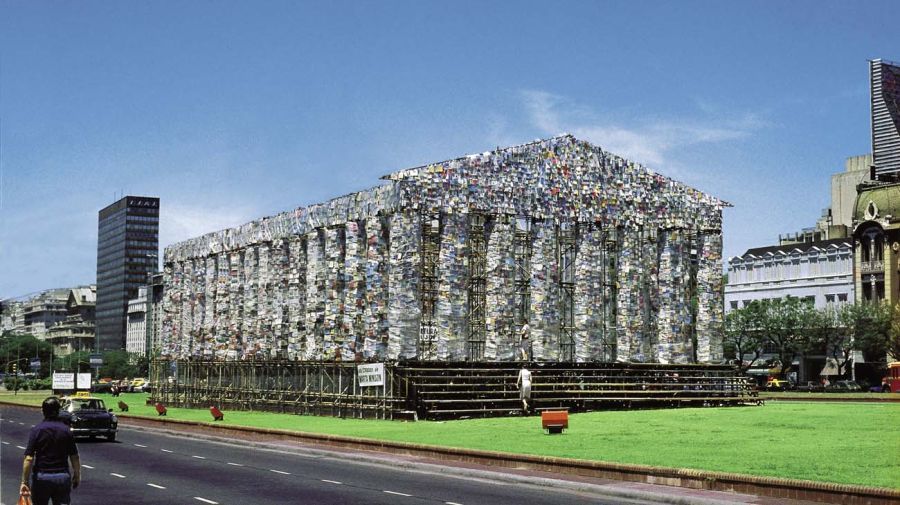
Lacan theorised that we are the masks which each one of us constructs as a personality. Is there a different Marta Minujín to the one who appears?
No, no difference. I have a different family and everything is different, all my friends are different. Some are more like me, bohemians who do not care about material things or accumulating fortunes, as the North American artists do, none of that. I don’t care about money either, I live with what I have and I have how I live. But I’m not interested in money, I’m interested in creating for other people. Luckily I can get sponsors for my gigantic works, which are extremely expensive. The Parthenon of Germany cost one million euros, for example.
But if your works are impossible to buy, they’re ephemeral.
No, no, not now, they are being purchased worldwide. Now I do these paintings which I sell but elsewhere, not here. Well, some here also but beforehand never – I never sold anything until I was 41.
And how did you survive?
I lived off scholarships, Guggenheim and 17 others, I was very poor. From then on I began selling when I started, thinking of Greek philosophy and the Parthenon, with fragmented sculptures which had much success. My sculptures are all over the world and now paintings.
So now you can say that art has produced a significant income for you?
It’s not that I’m very rich or a multi-millionaire but I have enough to live well and travel. All my trips are paid in general, always travelling first class and in five-star or six-star hotels so I can go without ever paying for a first-class ticket. Before conditions were terrible, I was living without a bath or heating for three years in Paris, for example.
You have turned 80 and democracy 40. You installed the Parthenon of prohibited books in Avenida 9 de Julio 40 years ago to celebrate the return of democracy. How do you remember that moment and the people then and how would you tell the younger generations what that society was like and what changed?
It was marvellous and fortunately now, in a few months’ time, I will be repeating the Parthenon here behind the Casa Rosada. It will last two or three months, with books but not only those prohibited by the last military dictatorship but by all the previous ones both here and in Latin America, prohibited by the military who dominated South America. So this Parthenon will be much more interesting, while just the same as the other.
I would like you to reflect on the evolution of democracy. What does it represent to you to look back 40 years, to the midpoint of your life. How has democracy evolved, what illusions did you have 40 years ago and have they been satisfied or frustrated?
I think that we are much better off than 40 years ago in the sense that nobody is disappearing, we do not have to go through all that. And democracy seems fantastic to me because there are governments in every province, harmonised into one movement or another, but there is democracy and we cannot live without democracy. It would be impossible for the world, least of all in war.
When you had to construct that Parthenon in 1983 along the 9 de Julio, did you do so without permission?
No, it was last minute... First I had the idea and then I went to see ‘Pacho’ [Mario] O’Donnell, who was about to become Culture secretary, and he wrote on a visiting card of his: “Marta has permission to make a presentation on the 9 de Julio.” So I built it and when he was about to take office [Raúl] Alfonsín went by and saluted me with his arm. That was world news and there I began with the big projects. I had already done a prone Obelisk, a pan dulce [panettone] Obelisk but the Parthenon was the biggest. Later I was invited to Documenta 14, the best exhibition in the whole world with the best artists and nothing for sale, and there I made a life-size Parthenon with almost 100,000 books from all over the world which had been prohibited at some time. That was masterly.
That was in 2017, 34 years afterwards. What difference do you find between one experience and the other, between having done it in Argentina for the recovery of democracy and having done it in Germany in 2017.
I enjoyed this one more because we were entering democracy and the monsters were leaving so the one here was much more. But the other one was fantastic because from that point on began all the international exhibitions in several countries simultaneously.
So that was how Marta Minujín became international.
Yes with the Parthenon. Before my work had come out a bit, in some newspapers, the prone Obelisk in the Bienal of São Paulo. Besides everybody was astounded by my being a woman because at that time women were included in the major exhibitions. They invited me for being an Argentine and a woman. They did not help me in many other ways but I had the Guggenheim scholarship and a couple of others so I managed.
In 1985, as the queen of Latin American pop, you paid Argentina’s foreign debt to Andy Warhol, the king of American pop, with corn on the cob. Argentina was then in default with the United States and the International Monetary Fund, while today we are somewhat in the same situation. I think that your idea of paying with corn on the cob somehow anticipated soy or Argentina paying in grain. What is your reflection on seeing the same situation 40 years later?
That the only way to keep paying debts is with what you have but not with money. We must try to change Argentina’s agriculture, cattle-rearing and all that so it can export, export and export so that, even if outside companies come to Argentina, this country can give more jobs to people so that there is not so much unemployment and nor would we have inflation of 100 percent while Venezuela has an annual 1,000 percent. So we are not very well-placed, there is no equilibrium between democracy and the economy at this moment, that’s what I feel, because it cannot be that prices go up every day, that produces a material anxiety which kills creativity. People are less cultured with no time to read, they are always on their mobile telephones with a changed posture as they walk, they neglect their physical wellbeing – all that also has to do with this new technology which helps us so much. But on the other hand, things always balance out.
What is the relationship between art and politics? To what do you appeal in each one of those works where you are mentioning a political message?
I believe art to be above politics although not science. The artists come first with the politicians behind and the scientists ahead – those who look after the human species and sound ecological alerts, those who do all that are above the politicians. Because the politicians have to change so that the world can change, they must change constantly but they don’t change as they should. Nowhere because look at the problems of [President Emmanuel] Macron in France with pensions and all that so that there are problems with that issue everywhere in the world. England [sic: the United Kingdom] broke off [from the European Union] and that has produced a problem for Europe.
Many of your works stem from icons while appropriating their myths: the Parthenon, the Statue of Liberty, the Venus of Milo, the Eiffel Tower, the Obelisk, etc. Why do you pick those symbols and what does their artistic appropriation mean?
Because the universal myths also straighten out people’s minds. Supposing that going along Avenida 9 de Julio, the Obelisk is erect and you level it out, that creates a different thinking. At this moment in time the Obelisk can be prone. Everything varies according to the position of objects in space. People had so many problems with my making the Obelisk prone that afterwards they ate the myth with the pan dulce Obelisk. The Statue of Liberty had to be absolutely prone due to the unresolved racial and immigration problems. I want to do that with fake hamburgers like the Sea Lion of Mar del Plata, false alfajores of compressed air, so that afterwards the people dismantle [the fake hamburgers] and change them immediately in McDonald’s. That was the first of the myths I wanted to do or the second. I haven’t been able to do it until now but I think that I will soon.
Finally, what is your relationship with the public, as one of the first Argentine artists to popularise contemporary art and take it into the streets and squares to bring it closer to people so that they might experience it? What do you think people think of your work? Do you perceive a special relationship with the public?
I love people and people love me, that’s good. When I see all those people moved, crying when I set Carlos Gardel on fire in Colombia, singing his songs while Gardel burned with his hand in his waistcoat, that was very moving. All my emotions are hugely mobilised when people love the imitations I do so much, that’s very good.
Production: Melody Acosta Rizza & Sol Bacigalupo.















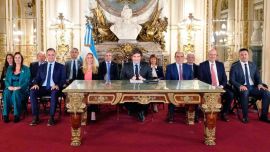
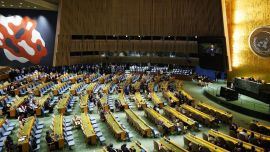
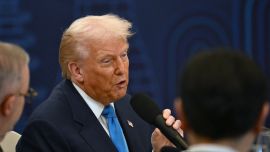
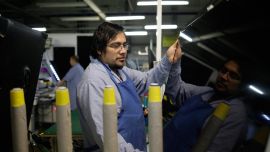
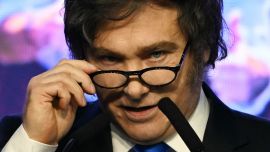
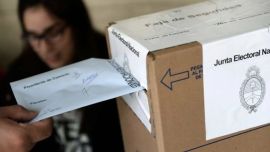
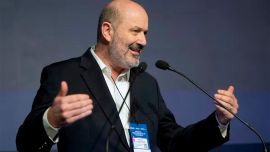

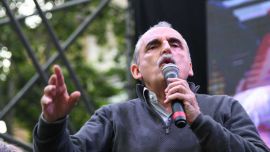

Comments